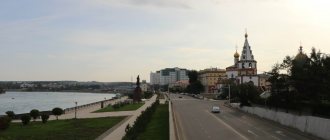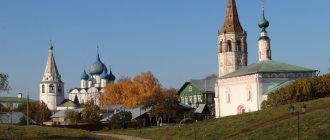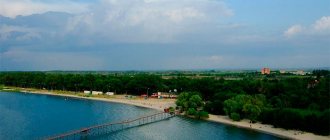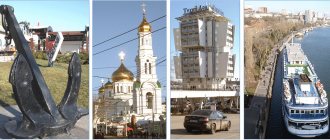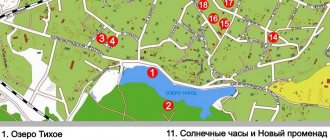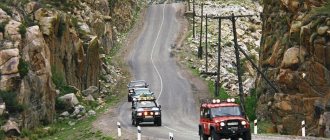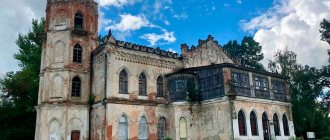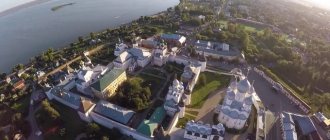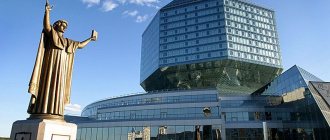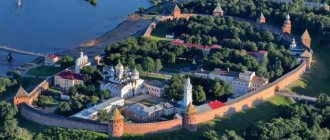Countries > Russia
Rostov the Great has an amazing history: it experienced its heyday several centuries ago, when it had significant political and religious influence. However, now it is a small city in the Yaroslavl region. The heyday left unique architectural monuments that have survived to this day. Most of them are concentrated on the territory of the Kremlin, and mainly they attract tourists to the Golden Ring. But besides them, there are several more interesting places to see. More details in this post.
- Story
- Attractions
- Rostov Kremlin
- Assumption Cathedral
- Hodegetria Church
- Metropolitan Garden
- Rostov enamel
- Church of the Savior at Torg
- Excursions
- Lake Nero
- Neighborhood
- Spaso-Yakovlevsky Dimitriev Monastery
- Church of St. John the Evangelist on Ishna
- Map
- General impressions
How to get there
- You can get to Rostov by plane from any airport in the country using domestic flights. For example:
- From Moscow to Rostov it is a 3-4 hour flight and will cost a couple of thousand.
- From Rostov-on-Don a day and 6000 rubles, 10000 rubles.
- From St. Petersburg 1.5 hours and 4000 rubles, 5000 rubles.
- From Anapa a little less than a day and 6000 rubles.
Russia provides international flights at the airports of many cities, for example from Kharkov and cities of other countries.
- By train, like any city, you can get there from any station, sometimes with transfers in less than a few hours, if Rostov the Great is located in your region or a neighboring one.
- Train Anapa, Rostov-on-Don, Veliky Rostov, a little more than a day - 3000 rubles, 7000 rubles.
- Nizhny Novgorod, Moscow, Rostov the Great, all together - 2000 rubles, 7000 rubles.
- By car. This is the simplest option, especially considering that this way you don’t need transfers, you choose the optimal road yourself and make stops as needed.
What to bring from Rostov
Enamel
About enamel, I think everything is clear. Good products with enamel are real works of art.
There is a lot of enamel in Rostov and it is expensive, although some simple jewelry is sold for 300 rubles or even cheaper. But something really beautiful, for example a box, costs from 1000 rubles.
It is better to buy in a store at an enamel factory, although you can also buy small items in souvenir shops around the Kremlin.
Bell
Some time ago, a popular Rostov souvenir was a clay bell. Now they are no longer so popular. There is nothing special about the bells, they just remind you of the large Sysaya bell that hangs in Rostov.
Ceramics
You need to buy black-polished ceramics. It looks just matte black, without glaze. This color is obtained by smoking products in smoke.
The best attractions of Rostov Veliky
How old is Rostov, and throughout its 1150-year history, it still attracts visitors. Surely, many times when you came to a new city, you asked yourself “Where should I go?” So where to go in Rostov? Here's a small list:
Rostov Kremlin (Bishops' Court)
The city of Russia's golden ring has its own Rostov the Great Kremlin. The most famous building in Rostov.
In Rostov, the Bishop's Court (Rostov Kremlin) was founded in the 17th century in honor of John the Theologian. This is a huge complex of churches, it consists, for example, of the Church of Hodegetria, the Church of the Savior on Senya, the Red Chamber and many others. It's like a small inner Rostov city.
Very often appears on postcards, stamps, many photographs and images.
You can purchase a single ticket to the Rostov Kremlin, which will be valid for two days and includes all key objects and exhibitions. The ticket price will be 850 rubles.
Excursion to beautiful places not included in the ticket price (850 RUR):
- Museum cinema "Clock Tower". — 150 rub.
- Observation deck of the Water Tower (panoramic view of Rostov) - 100 rub.
- A single discounted ticket for visiting the Observation Deck and the Clock Tower Museum Cinema - 200 rubles.
- “House of Peasant Yolkin” - 50 rub.
- Visit the house of the Rostov merchants - 100 rubles.
- Architecture of the Rostov Kremlin, Metropolitan Garden - 100 rub.
- Walking along the walls of the Kremlin with a view of Lake Nero - 230 rubles.
Rostov Kremlin
Assumption Cathedral
Formerly the cathedral of the Rostov region. Initially, like all churches earlier than the 16th and 17th centuries in the Rostov region, the cathedral was built of wood; information about when was not preserved and burned down in the 12th century. In its modern appearance, it began to look already in the heyday of architecture and the era of construction - in the 16th century. The belfry of the Rostov Kremlin is part of the Rostov Kremlin complex.
Assumption Cathedral
Belfry of the Rostov Kremlin
This is a building consisting of four arched bell towers, with an entrance and utility rooms below. Information from ancient documents says that at first only one span of the belfry and the first part were erected, and by the end of the 17th century 2 bells were finally completed and 15 bells were hung. The most famous are Polyeleos and Swan. The bell tower is adjacent to the Assumption Cathedral in the Rostov Kremlin complex.
They are included in the general tour of the Kremlin exhibitions for 850 rubles.
Lake Nero
This is a freshwater lake from the pre-glacial period, on the banks of which there are monasteries, a city park with an embankment, Kremlin walls and many monuments and hotels.
There are islands in the lake, for example Lvovsky.
The largest lake in the Yaroslavl region, with an area of 54 km2 and with more than twenty rivers and streams flowing into it. The tour of the Kremlin walls includes a walk with a view of the lake - 100 rubles. You can also just walk along the coast, or take it along with one of the tours for an additional fee. fee for a walk along Nero, everything can be traced on a square - 400 rubles.
Lake Nero
Spaso-Yakovlevsky Monastery
On the shore of the lake, surrounded by walls, stands a monastery. Until 1888 it was independent - independent stauropegy. Founded in the 14th century by the clergyman Jacob. A spring flowed nearby.
In the 1930s, during the demolition of all churches, this one was also demolished, but soon, the refugees of the expelled bishop re-erected a temple on the site.
Spaso-Yakovlevsky Monastery
Excursions
Despite its small territory, the history of Rostov the Great is so rich that it will be quite difficult to prepare on your own. If you don’t want to miss anything interesting and learn more about the unusual history of the city, you should book a tour with a local professional guide:
City Park
The main recreational place for residents is the city park. It is located west of the center on the shores of Lake Nero. The green and calm park is perfect for relaxing and walking. Several years ago, its landscape was reconstructed and landscaped, in particular, more recreational and children's areas appeared.
Sights of the Rostov Kremlin
In the Rostov Kremlin there is a whole complex of ancient churches, bell towers, museums and catering. The cost of a tour along it can vary from 2000 rubles. up to 9000 rub.
Ticket to visit the exhibitions of the Rostov Kremlin - 850 rubles.
You may also be interested in: Murom is a city rich in attractions. Museums, cathedrals and monuments.
Gate Church of St. John the Evangelist
The temple was built above the main gate on the western wall of the Rostov Kremlin. in the 19th century, they wanted to dismantle the church, along with another one, in order to erect other buildings near the Assumption Cathedral, but the townspeople, concerned about this, submitted a petition to the Rostov Duma to preserve the religious and architectural value. later restoration was carried out.
Gate Church of St. John the Evangelist
Resurrection Gate Church
Or - the holy gates that form the main entrance of the world-political court. consists of two towers and an arched entrance with a huge painted icon on top.
There are various plantings nearby, and there is also a bell tower.
Church of Hodegetria
Part of the ensemble of the bishop's court, built in 1693 at the junction of eras. It has a rectangular shape and two floors. During the Soviet years, the church served as a building for councils and administration.
The baroque church previously contained an image painted by Luke, but it was lost in the 20th century. In the display cases there are examples of embroidery based on the outfits of clergy.
Entrance price - 70 rubles.
Church of the Savior on Senya
We learned about the date of construction from the surviving inscriptions on the cross of the church. The building dates back to the 17th century. This is the heyday of Rostov architecture, which followed the development of the city.
The church was painted in the same year of construction - 1675, by masters from Yaroslavl and priest Timofey. The church became a museum and restoration began.
This is one of the expositions of the entire excursion - 150 rubles, the entire tour of the complex - 650 rubles.
Church of the Savior on Senya
Red Chamber
Like almost all the main buildings of Rostov, they date back to the 17th century. The Red Chamber was no exception - these are the royal mansions, which are one of the most beautiful buildings in the Kremlin complex, in addition, it has two floors and incredibly beautiful arches. This is where the name comes from - red from Old Russian - beautiful.
Entry price - 700 rub.
Metropolitan Garden
When construction in Rostov was completed, the garden was landscaped. In the 90s of the last century it was reconstructed, as it corresponds to the canons of the 17th century landing and has a cruciform shape. The garden contains apple, pear, cherry and plum trees. There are benches and gazebos.
Without visiting expositions and exhibitions - 100 rubles.
Museum of Bells and Bells
In Rostov, you can compare the sound of bells and learn about their production in this museum, where the bell tower is located directly. It stands in the Rostov Kremlin complex.
Around noon the bells ring. The halls contain a variety of different types of bells. Although the room is small, the bell tower arouses genuine interest among tourists.
Visit to the exhibition - 70 rub.
Assumption Cathedral
Immediately behind the powerful fortress wall surrounding the Rostov Kremlin, you will see a majestic building with five large light gray domes, striking in its beauty and power. This is the ancient Assumption Cathedral - the most famous temple of Rostov the Great, built in the 16th century.
On sunny days, the huge domes of this majestic building, shining in the sun against the blue sky, leave a lasting impression. After admiring the beautiful and unique temple from the outside and climbing the steps, you can go inside. Divine services are held in the temple, you can light candles and venerate the icons, but active restoration work is underway inside the cathedral, and therefore most of it is not yet available for inspection.
Museums of Rostov
Museums in Rostov the Great are incredible collections of folklore and culture of the people, which have developed over many centuries.
Museum of the Frog Princess
It is based on legends and the most famous tale of the “Frog Princess”. It was believed that among the ancient peoples of the Merya tribe, where the frog was a sacred animal. This is how a thematic panopticon appeared, telling about the life of an ancient tribe.
Rostov museums regularly hold exhibitions of frog figurines, of which there are about 5,000.
Ticket prices for adults - 150 rubles, children from 3 to 14 - 100 rubles.
Baklushi Museum and Varenya Library
The leather making house is based on one of the most famous proverbs and is designed like a Russian hut. There you can see the stages of leather dressing. From the beating of the thumbs to the almost finished leather. There are also ready-made examples made by the best craftsmen.
Cost: adults - 230 rubles, children - 150 rubles.
House of Crafts
There are all kinds of folk arts and crafts here. Ceramics, wood carvings, pictures, works of the 16th-17th centuries, birch bark, lace and much more.
You can buy the exhibits you like, as well as take a master class.
For family holidays, a guest house is provided from 2000 rubles. up to 3000 rub. Additional seats - 500 rubles, for children under 12 - free.
Horse Art Gallery
This is a gallery where you can view or purchase paintings by the famous Rostov artist Mikhail Selishchev. Here you can see enamel and postmodernism.
Exhibits are constantly presented at international exhibitions in different countries.
Master classes are held at a cost of 3,000 rubles.
Cafe-museum Lukova Sloboda
The museum is also a cafe with set or individual lunches.
On the ground floor there is a themed cafe where dishes with onions are served, on the second there is an excursion about the history of growing the crop. There they talk about different varieties of onions and their history of cultivation in Rostov.
Excursions for children - 150 rubles, for adults - 220 rubles.
Group of 30 people - 170 rub.
Group of 10 people - 130 rub.
One person - 130 rub. Set lunches from 300 rub. up to 500 rub.
Finifti Museum
Gallery of folk crafts and paintings. This is the house of enamel painting, the museum has two buildings, one is located at the production site of “Rostov Enamel”, where you can see the creation process.
The first enamel dates back to around the 18th century. This is precisely the time of development of fine and jewelry art.
Excursion for less than 20 people - 500 rub.
Master class - 700 rub.
Visit to the exhibition - 200 rub.
Alyosha Popovich's Compound
According to legend, one of the famous trinity of heroes comes from Veliky Rostov. A thematic panopticon is also organized here.
An entertainment program and a tour take place here, where for children's tickets (up to 16) there is a 100 ruble discount, lunch in a cafe for one person is 380 rubles.
Museum Rostov Podvorie
According to old documents, in the shopping arcades that were previously Gostiny Dvor, there is a museum. This is the Yemelyanovsky shopping row.
It opened in 2015 and presented 4 different periods. The first is the first settlements of the Merya people, who lived between lakes Nero and Pleshcheev, the second is the time of the peasantry and serfdom, the third is the merchant period, the fourth is a later time, towards the abolition of serfdom.
Here you can drink tea with gingerbread and learn about beliefs and legends.
Jerzy Petrovich Museum
The museum has a children's room where you can rent a child. There is food, a play area and animators; it is based on one famous myth about a hedgehog, either saved or awarded the mercy of Catherine II.
The village of Petrovskoye was first mentioned in 1207 in the chronicle of the city. It was built around the monastery to which it belonged, and this is where the legend begins. Now it is a private house with a variety of figurines and folk art attractions.
The excursion costs 200 rubles.
Where to eat in Rostov
Meeting
In the Kremlin, in the Red Chamber.
There is a Sobranie restaurant in the Red Chamber, but it is more for corporate events than for individual relaxation. Everything is somehow big and uncomfortable. We had lunch here once - not good, not bad. The service is slow, they may forget what you ordered, and I didn’t like how they react to criticism. They brought a cold dish, when I asked to warm it up, they made a strange expression on their face and tried to convince me that it was necessary.
The food is delicious. But service can ruin the experience. I got the feeling that the restaurant lives off of corporate events and large groups of tourists (buses are taken here), and they have given up on individual visitors.
Open from 10:00 to 23:00.
Alesha Popovich
There is Russian cuisine, interior, and you can dress in chain mail.
The first one is on Tripadvisor, you can check it out. I haven’t been here, for some reason I didn’t like the facade of the restaurant, although I knew that they had a high rating.
I advise you to come here. I read all the negative reviews and several dozen positive ones. I liked that the administration does not ignore criticism, this is a good sign. We have already written that there are a lot of custom reviews on Tripadvisor. Not everyone can be trusted.
When I'm in Rostov next time, I'll definitely come here and tell you about my impressions.
Churches and temples of Rostov the Great
Church of Isidore the Blessed on the Ramparts
The second name is the Church of Isidore the Blessed. Built on the site of his many years of worship, a few minutes walk from the Rostov Kremlin. Year of construction: approximately 16th century. The church is small and requires restoration.
Previously, it was surrounded by picturesque ramparts, there was a gazebo and a small fence, trees.
Church of the Savior at the Market
The church, built in the 17th century, combines frescoes, architecture, ornaments and beautiful architecture, close to the buildings of the Rostov Kremlin. Reflects the whole essence of the architectural construction of Rostov in the 17th century.
Church of St. John the Evangelist on Ishna
Like most ancient churches and temples, it is not in Rostov itself, but near it. Built in honor of the appearance of John to Abraham. It contained several tiers, which was typical for the 17th century. Each new reconstruction repeated the form of the previous one, which fell into disrepair over time.
The iconostasis and gilded gates of the master Isaiah are exhibited in the Rostov Kremlin Museum. A tour of which includes other attractions and costs 800 rubles.
Temple of St. John Chrysostom in the village of Godenovo
A popular place of pilgrimage is the Church of St. John
Chrysostom. It is famous for the fact that in 1933 the Life-giving Cross of the Lord was secretly transported here.
It was built at the turn of the 18th and 19th centuries in 1794 and retained all the ancient paintings.
Church of the Ascension of the Lord
The Church of Isidore the Blessed on the Ramparts is one of the churches in Rostov, built on the place where Isidor Tverdislov lived. He built a hut in a swampy area and prayed all his life. An iconostasis was first built in the temple from wood, but over time it was replaced by a stone one. Then there were reconstructions, the conversion of the temple for an exhibition, and in 2002 it again began to hold services, which are attended by a large number of people. This unforgettable and bright place is a must-visit!
Where to stay in Rostov
Treat hotels in Rostov with leniency. Everything is good, but each has a bunch of shortcomings that can create a bad impression. Be prepared for broken locks, bad water, power outages, poor maintenance, etc. This applies even to those hotels that have the “Revisorro” and “Tripadvisor” stickers. And it’s cold in all the hotels here.
Read detailed instructions: How to book accommodation online
We recommend two hotels in the center of Rostov. And one more, but with a creak.
Cellar house
It's right in the Kremlin.
Entrance to the hotel House on Cellars
You will be given a pass to enter the Kremlin and park on site. The inside is clean and tidy, but nothing more. The interior is simple. There is a shared toilet on the floor (except for suites), but there are separate toilets for men and women.
You will live on the territory of the ancient Kremlin, surrounded by powerful walls in an ancient building. In the evening, when the museums close and all the tourists have left, the Kremlin will be at your disposal. Walk here all night long.
You can book here .
Hotel Lyon
A good hotel a stone's throw from the Kremlin. Occupies a building from the late 18th century. They have a transfer from the station, you need to call and warn. But in winter it is cold here, like in all other hotels in the city.
The hotel has bicycle rental.
Read more…
Hotel Podozerka
Located by the lake next to the Kremlin. These are all advantages.
I won’t write about the cons. I will only say that the price is higher than in others. I wrote about the existence of this hotel. It's near the Kremlin, but I can't recommend it. The administration is well aware of all the shortcomings and, I hope, this place will improve over time.
Ancient monasteries of Rostov
Avraamiev Epiphany Monastery
In 990 it was built by the Monk Abraham. From there you have a view of Lake Nero. Like most, it requires restoration.
In the monastery you can eat at a meal, and liturgies and services are also held there.
Trinity-Sergius Varnitsky Monastery
In the 15th century it was built by one of the Rostov bishops, but he was poor and could not afford stone construction. Subsequently, it was still built in stone. The inside of the monastery looks incredible. Originally it was female.
There is a hotel there. There are double rooms and single rooms. Prices from 1600 rub. up to 3000 rub., breakfast - 100 rub. Family room with private bathroom - 4000 rub. including breakfast.
Mother of God Nativity Monastery
One of the most popular and oldest convents in Rostov. During the years of the Soviet Union there was devastation here and the premises were turned into official ones.
Recently the monastery restored its halls, domes, installed heating and much more.
Rostov Boris and Gleb Monastery
The beautiful monastery, built in the 13th century, with a fortress wall, was erected by two saints Feodor and Paul in honor of Boris and Gleb, and later the relics of a third began to be contained there. According to legend, Pozharsky himself visited there.
In Soviet times, it became a warehouse, and the post office and state bank were located there. The service was held until 1928.
The ancient trade route from Uglichi to Rostov passed here. In the 17th century it includes 8 large and more small buildings.
Petrovsky Monastery
Back in 1250-1300, a monastery was also erected at the Peter and Paul Church of St. Peter. Over many centuries it was rebuilt, underwent changes, acquired bell towers and towers, but despite many centuries it was functional. In 1933 it was dismantled and used as housing.
In 2005, the buildings were purchased with charitable funds and a liturgy was celebrated. According to legend, the relics of St. Peter resided there, and a monument was erected at the supposed site.
Places for walking
Cathedral Square
Address: Rostov Kremlin
The main square of Rostov the Great is called Cathedral and is located in the heart of the Rostov Kremlin. In ancient times, it served as a gathering place for the people's meeting, where important city problems were resolved and discussed, courts were held, and trade was conducted. Frequent fires changed the size and outline of the square, but its significance as the city center remained unchanged.
At the turn of the 17th-18th centuries, the square was surrounded by a stone wall, and it became part of the Kremlin. Therefore, now, in order to take a walk and enjoy the picturesque views of the churches, you need to visit the Rostov Kremlin.
Lake Nero
How to get there: by car along the street. Spartakovskaya
The unusual name of Lake Nero excites the minds of many city guests. There is a legend that one traveler heading to Rostov lost his way and wandered through the local swamps for several days. When, exhausted from fatigue and hunger, he finally saw the domes of the Rostov churches, he exclaimed: “This is not Ro...”, but before he could finish speaking, he fell struck by an arrow. Since then, the ancient lake began to be called “Nero”
The first people to populate the shores of the lake were the Finno-Ugric peoples. In the 9th century, these places also attracted the attention of the Eastern Slavs, who gave the lake the nickname Rostov. However, the name did not catch on; people continued to call the reservoir “Nero”, which translated from Finno-Ugric means “muddy, swampy place”.
The waters of Nero have been a favorite place for fishermen for several centuries. Today there are also boat and steamship excursions on the lake.
City Park
Address: City Park Telephone: 8 (48536) 6-05-91 Opening hours: 10:00-22:30 Tue.-Sun., Mon. — day off Cost: free
You can admire the water surface of Lake Nero and just have a pleasant rest in the city park. It begins its history in the first half of the nineteenth century. At one time, there were gazebos, a wooden circus and a theater here. A pier for pleasure boats was also built in the park.
In 2012, the City Garden underwent a large-scale reconstruction, which made this place even more attractive and convenient for a pleasant pastime.
Monuments and sculptures of Rostov
Sculpture of the noble symbol of the Great City
This is not just a sculpture, but a symbol of Rostov the Great and the Yaroslavl region. Created during the reign of Mikhail Fedorovich and later, approved by Anna Ioannovna. Later, by Catherine II, and now in 2001 it was included in the heraldic register.
The golden deer is depicted on the coat of arms and has become not only a cultural, but also an official symbol, an element of the city emblem. In 2013, the “Deer” sculpture was opened near the Onion Freedom Museum. Also, there is a hotel nearby, where tourists come to see it.
The sculpture is represented by a deer with a golden mane, like on the coat of arms, with its head raised up, located on a stone with the inscription “The Noble Symbol of the Great City.”
Monument to WWII Soldiers
The monument to WWII Soldiers stands on the main square of Rostov. The monument depicted two soldiers, an old soldier walking in front and a girl. They all go to the front and carry the flag, symbolizing determination, perseverance and faith only in victory.
On the monument there are several poured inscriptions about the memory of fallen soldiers and Rostov soldiers. One of the inscriptions reads: “To the soldiers of Rostov, defenders of the Motherland.”
Every year, residents bring wreaths and flowers to the monument in honor of those killed in the war.
Routes in stories and tips from tourists
When going to Rostov Veliky and planning an independent trip, look into the stories and reviews of tourists who have already visited this ancient city. In them you can find information about the most interesting things in Rostov, which you definitely need to get acquainted with. This will come in handy when planning your own routes. The photographs will show you what the city looks like at different times of the year, which will help you decide on the timing of your trip.
Stories and reviews from tourists about a trip to Rostov the Great:
- Winter fairy tale of Rostov land - photo album about the January trip from Lyudmila
- My autumn golden Rostov - a story from Ena
- Rostov the Great - report from Maria
- Trinity-Sergius Varnitsky Monastery - review from Anna
Advice will also come in handy
What to bring from Rostov the Great
View of the Spaso-Yakovlevsky Monastery from Lake Nero Photo: © Lyudmila_Klyopova
All tourist reviews about Rostov the Great on Turister.Ru
More information about the city, its history, transport, weather, interesting events - in the general guide to Rostov the Great, as well as in tips on how to get there.
Architectural sights of Rostov
Rostov Gymnasium named after A.L. Kekina
Architecture lovers will also find something to see in Rostov.
The gymnasium was erected in honor of the deceased only son of A.L. Kekin. Since there were no more heirs, the Kekins decided to donate their entire fortune to the city, whose authorities were obliged to build a men's gymnasium. This was stated in the will and after the Rostov authorities notified it, construction began. However, not many people agreed with such decisions and the opening was postponed by as much as 2 years.
During the war, the gymnasium became a hospital.
At the moment this is the largest educational institution in Rostov.
Bell tower of the Church of the Exaltation of the Cross
Near the Velikiy Rostov fire station there is a bell tower, which became a fire tower in the 1930s. The history of this bell tower began with the construction of a small church in the 17th century. Subsequently, it was rebuilt 200 years later, and after the demolition of the temple, a fire station was erected in its place.
There used to be frequent fairs around the church, surrounding the bell tower with a shopping area.
The bell tower has four tiers, as at the time of construction.
Selivanov's House
In the Rostov region, on the Okrug Street, there is an ancient architectural monument - the Selivanov House. Selivanov Pavel Aleksandrovich - merchant of the first guild. Initially, they were supposed to build a stone house, which was common at that time, and was included in the city plan, which was approved by Catherine II, and the house was given to the councilor.
Around 1780, the Rostov Duma received a request for permission to build a house on the site, when a second wooden floor was added.
Subsequently, the house went to Selivanov’s son, who also followed his father’s example and rebuilt the house, but more radically. Then the house acquired its modern appearance in 1909.
So the house came into possession by inheritance and was eventually municipalized with the beginning of Soviet power. The premises were divided into apartments, and most of the interior items were lost.
The house has undergone restoration and now the Selivanov House hotel is open there.
Prices: from 1600 rub. up to 4000 rub. There are rooms for one person, several, for young couples, people with children and many other types.
Pleshanov Estate
The hotel was built in the historical center of the city, and one and a half kilometers away there is Lake Nero before the Ice Age.
The hotel rooms have air conditioning, a refrigerator, all the necessary furniture and free Wi-Fi for vacationers. Services include a sauna, nanny, animators.
Paid services not included in the price include parking - 250 rubles. and slippers - 100 rub.
Rooms are available for non-smoking, double, single and many other types, for example for children. Prices from 1600 rub. up to 3000 rub.
Emelyanovsky row
In 1780, construction began according to a new plan, one of the oldest and famous families, the Emelyanovs, invested in the project and thus the “Emelyanovsky Row” was built, named similarly in honor of the family, although the Shapovs and Khlebnikovs participated in the construction.
A century later the row fell into disrepair and was repaired. At this time, columns appear here.
Almshouse of D. M. Pleshanov
In 1873, one of the noble merchants, Dmitry Maksimovich Pleshanov, founded a charitable foundation for disabled people - the Pleshanov almshouse. He invested 120 thousand rubles in the establishment, the interest from which supported people.
Being one of 4 almshouses in Rostov, it was also the most accessible. The almshouse had a special name - “for the charity of the elderly and crippled of both sexes and all classes of Rostov citizens who do not have a means of support, as well as for the shelter of poor orphans, boys and girls.” Almshouses should not be confused with poor houses and homeless shelters.
The children who ended up in this almshouse were kept and sent for education by the Pleshanovs themselves. There were not many or few of all those detained or “suspected” - 70 people.
The building was built on three floors, with two wings and a church nearby, which during the Soviet Union, when all the churches were demolished, became the Red Army club. Now the almshouse building has become the tax office building.
Then, Pleshanov could not even think that his name would be famous for such a gesture.
Mytny Dvor
For the second century, the washing yard has been continuously functioning. At the beginning of its work in 1831-1832, a duty was collected there for the transportation of goods, and today there is a local market there. Also in the spring, the Rostov Fair takes place there.
The structure is a long pavilion with arches and galleries throughout the period and also the main entrance is an arch.
You can read more about the history of all buildings on the Wikipedia website.
Church in Ishna
In the village of Ishne, Rostov district, there is an elegant burgundy wooden church. A turret with a green tent, the roof of the temple gracefully curved like a heart. There is a mysterious twilight in the church, the wicker shutters of the windows barely let in any light. Near the church there are water meadows, a traditional Russian village lives its own life. I'm glad I took the time to see such a miracle.
I ended my day of wandering at the Slavyansky restaurant. Tasting ancient dishes, caviar and sturgeon, to the accompaniment of folk melodies is a wonderful end to a trip to Russian antiquity. Andrey Murenkov, author.
The article does not pretend to cover all attractions; it reflects the individual experience of our blogger.
Cafes and restaurants
All restaurants are mainly located on the coastline. There are also places where you can go eat in the Rostov Kremlin complex, where, without a guide, you can get a map that you can buy at any souvenir shop.
- Pike yard. A seafood restaurant and a dried and smoked fish store. Prices on average from 50 rubles. up to 1500 rub.
- Parish. Also located on the coastline. There you can try both coffee and cold drinks, as well as hot dishes. Prices for salads start from 50 rubles. up to 300 rub.
- In Rostov Cafe “Rus”. Food from 150 rub. There are soft drinks. Desserts from 50 rub.
Interesting facts about Rostov the Great
- On October 31, 2020, the population of the Russian Federation turned out to be 144 million, and Veliky Rostov, according to the results, counted approximately 32 thousand inhabitants.
- An interesting fact is that with such a small population, there are quite a lot of tourists here and the city ranks among the top 15 most visited routes in Russia.
- Filming of “Ivan Vasilyevich Changes Profession” took place in Moscow, Yalta, and Rostov the Great. The director, Leonid Iovich Gaidai, is remembered by the masses as the most successful film of Alexander Sergeevich Demyanenko in his filmography.
- The Assumption Cathedral is also called Yaroslavl, since it is the cathedral of the Yaroslavl metropolis and diocese.
Story
Now Rostov is primarily a city in the south of Russia, but it was Rostov in the Yaroslavl region that appeared nine centuries earlier and was once very important.
The heyday dates primarily from the 11th to 13th centuries, when it was the center of the Rostov-Suzdal principality. It was the administrative and religious center of the region. However, later Moscow acquired greater strategic influence, which subsequently deprived the principality of political independence and left Rostov only with important religious powers. But then the main diocese was moved to Yaroslavl, depriving it of this function. Then it becomes a shopping center with the largest fair in the area.
Since the 19th century, a real decline begins: gradually, only the architecture remains of its former greatness, and it becomes a small county town. Despite the fact that now it is practically not developing, Rostov the Great has preserved an impressive historical heritage, attracting many tourists traveling along the Golden Ring.
